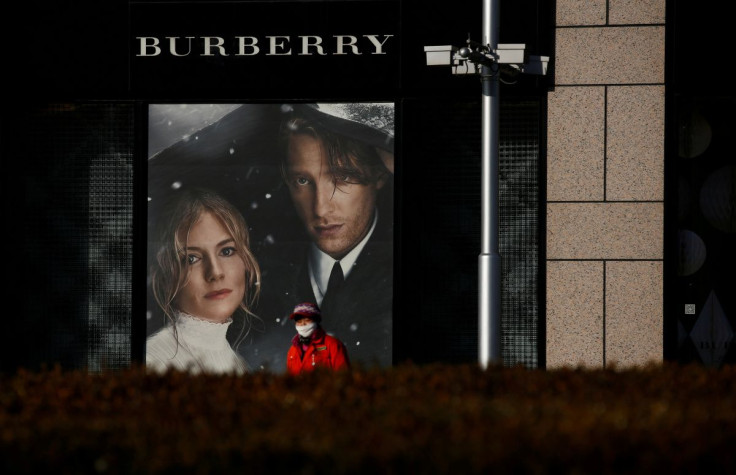Burberry Pins Prospects To China's COVID Recovery

Burberry's prospects depend on how quickly its biggest market, China, recovers from COVID-19 lockdowns, the British luxury goods brand said on Wednesday while reporting higher sales and profits for its 2022 financial year.
Sales in China, which accounted for 30% of the 166-year-old company's turnover last year, fell 13% in its final quarter after some stores were forced to close and digital sales were disrupted in March, Chief Financial Officer Julie Brown said.
Full or partial lockdowns were imposed in dozens of Chinese cities in March and April, including a protracted shutdown in Shanghai, keeping shoppers confined to their homes and severely disrupting supply chains.
Currently, about 40% of Burberry's business in the country was affected by lockdown measures, Brown told reporters.
Burberry said its medium-term outlook of high single-digit revenue growth and meaningful margin growth at constant exchange rates depended on the impact of COVID-19 and rate of recovery in consumer spending in the world's second-biggest economy.
China's track record was a good omen, Brown said.
"The good news is when you look at what happened in the first wave, the recovery is very quick and very pronounced," she said, noting that Burberry's full-price sales in China were still 54% higher than pre-pandemic levels over the full year.
Shares in Burberry, which have fallen 25% in the last 12 months, were broadly flat in afternoon trading.
Its luxury rivals have faced similar hits in China. Gucci-owner Kering said last month that lockdowns had disrupted its business in the country.
PRICE RISES
In January, Burberry lost its Chief Executive Marco Gobbetti to Ferragamo. Gobbetti had been working on taking the brand further upmarket and his replacement, Jonathan Akeroyd, said the transition was largely complete.
"(The) expectation was now on growth," said Akeroyd, who took up his position in March.
He said he would set out his strategy in November, but noted opportunities in outerwear, including Burberry's signature trench coats, and leather goods.
Burberry, like other luxury labels, is so far only seeing a small impact from the rising cost of living, analysts said.
"That's because the millionaires buying high-ticket handbags aren't as worried about rising food and fuel prices, so the brand is relatively insulated in that respect," said Hargreaves Lansdown equity analyst Laura Hoys.
Brown said Burberry, which is known for its camel, red and black check and TB monogram, had raised prices by a high single-digit percentage last year, mainly for leather goods, without seeing any hit to demand.
"We do see continued opportunity for price (increases)," she said. "Clearly the world is suffering at the moment from major inflationary pressure, so we do see opportunities for selective price increases."
Burberry reported a 23% rise in revenue to 2.83 billion pounds ($3.5 billion) and a 38% rise in adjusted operating profit to 523 million pounds for its full year, which ended on April 2. Comparable store sales in the final quarter rose 7%.
($1 = 0.8021 pounds)
(Editing by Kate Holton, Matt Scuffham and David Clarke)
© Copyright Thomson Reuters 2024. All rights reserved.




















